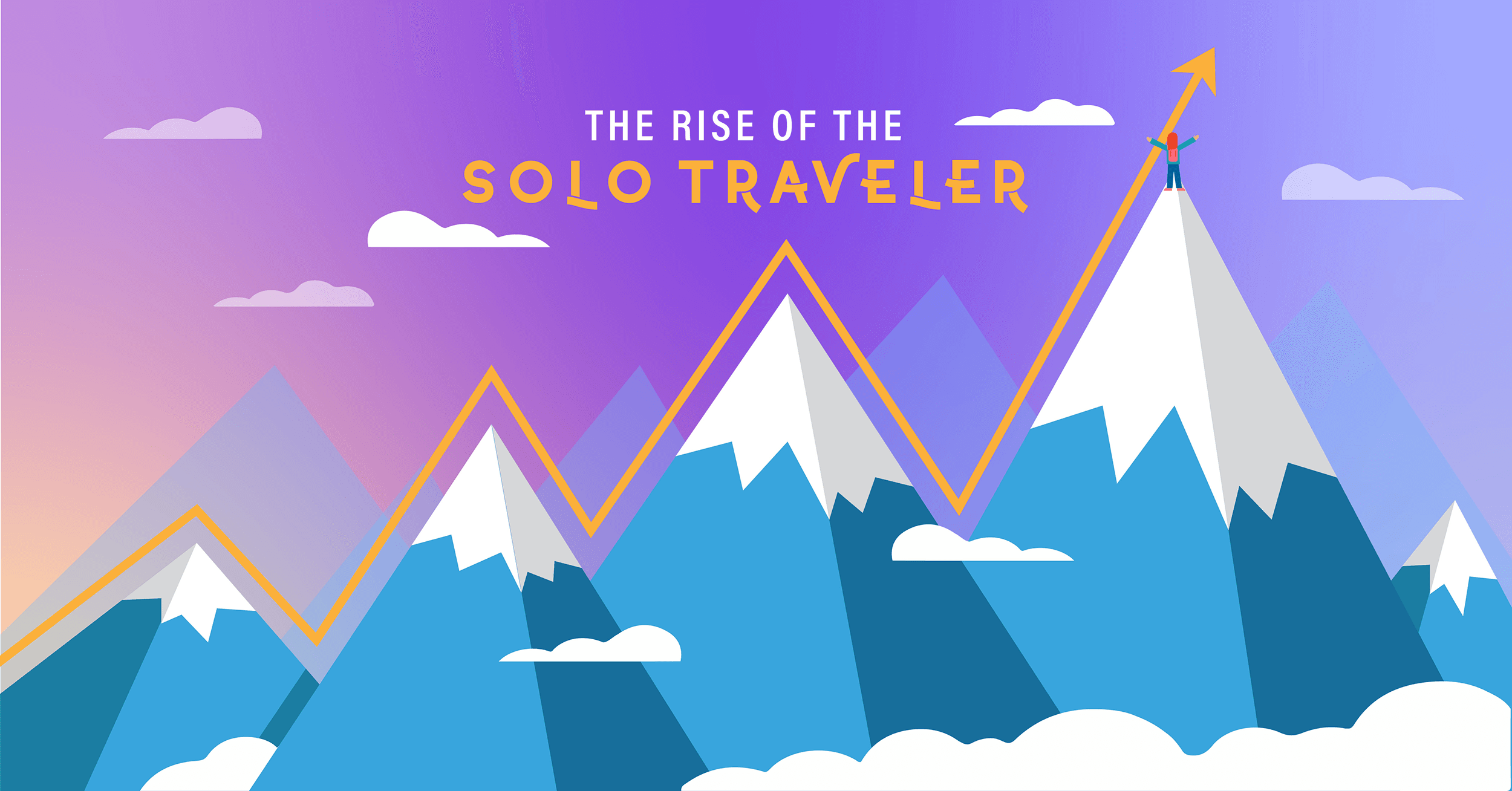
3 Major Ways Brands Can Easily Capitalize on Solo Travel Trends
A desire for independence. Time away to relax and recharge. Unique interests. No matter the reason, one thing’s for sure—more people are choosing to travel solo than ever before. From baby boomers to millennials, studies show 36 percent of travelers plan to include solo travel on their future itineraries. As this current travel trend continues to grow, it’s important for travel marketers to reach these independent travelers and secure a spot on their to-do or to-go list. To prepare for those seeking tables, seats or rooms for one, here are three ways to market to the solo traveler.
According to Google Trends, the number of web users searching for solo travel has increased dramatically in the last five years. That’s why strategic search engine optimization (SEO) is key when guiding users to your website. SEO is the act of making changes and additions to a website to increase the overall quality and quantity of users that find your website through organic search engines such as Google or Bing. Optimizing your page includes everything from keywords to load speed to mobile-friendliness. If users aren’t finding what they are looking for on your website, they are flocking to another site, likely your competitors’. So how can they find you?
Most destinations are not going to specifically target solo travelers, but by crafting content around specific keywords, it is possible to rank in Google results for these phrases. For example, ranking for the term ‘solo travel’ would take some serious research, time and money. However, ranking for something more specific such as ‘solo travel destinations near Milwaukee, Wisconsin’ is more doable. Also, consider terms that are closely related to your intended search term. Not only will this content be helpful for your users, but it’s helpful for your Google rankings, as well.
Increasing the visibility of solo travel is the first obstacle marketers face. For some, solo travel is a no brainer. For others, though, it can take a little more convincing. Some are traveling solo electively. As destination marketers, you should already be creating content for travelers—sample itineraries, things to do, top hotels for families, etc. If you want to be considered by solo travelers, you must first acknowledge them. Reinforce the desire from this audience by sharing stories, itineraries and photos that will appeal to those traveling alone. This can also be done using social media influencers who have been effective in producing FOMO-worthy content. Part of understanding the joys that solo travel can bring is seeing it firsthand.
Not every person traveling alone wants to be alone. Keep this in mind when promoting content and events for solo travelers. The Reddit community r/solotravel is home to 517,000 ‘Wanderers’ who use the community to communicate with others about accommodations, do’s and don’ts and more. Places that offer networking events or activities will likely win over those traveling alone who want a little companionship on their travels. Another attribute to note—solo travelers are frequent travelers and they don’t exclusively travel alone. Promote your solo travelers' content to all travelers, identify interests and then retarget these users with personalized solo travel banners ads, native articles and more.
Over half of millennial solo travelers list cost as the top concern when selecting a destination. That’s because solo travel isn’t always cheap. Some lodging and cruise companies also implement a single supplement fee when guests book a room for one. To appeal to those who chase wanderlust independently and on a budget, waive fees for solo travelers or reserve a select number of solo spots at a discounted price.
There’s also an opportunity to attract solo travelers during shoulder and off-seasons. A 2018 survey revealed over half of solo travelers prefer to plan trips for September and October, while less than 20 percent prefer July. Strategically timing promotions for solo travelers can help maximize bookings and garner more business during slower seasons. Thanks to solo traveler content and an optimized website, you should have a great retargeting pool of potential travelers to promote these deals to. After all, not many travelers book their trip on the first website they visit.
There are many ways and reasons people travel, yet the solo travel trend creates unparalleled opportunity for travel marketers. By optimizing your website and social channels with fresh, personalized content, your brand can land on the shortlist of solo sabbaticals.
Travelers might like to fly solo, but you don’t have to. Hoffman York is a full-service advertising and marketing communications agency with experience helping travel and tourism clients succeed. HY provides clients with award-winning creative solutions, digital, paid media, earned and social media, as well as research and analytics. To learn more about how HY can help your brand succeed, contact us at [email protected]. Or, click here to view our past work.